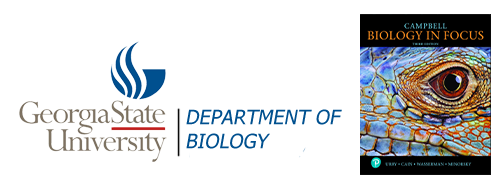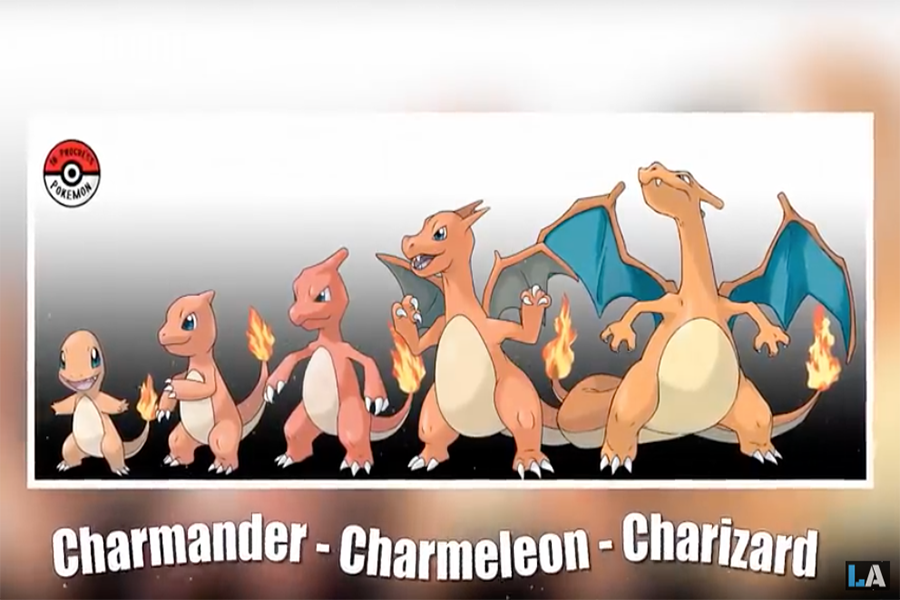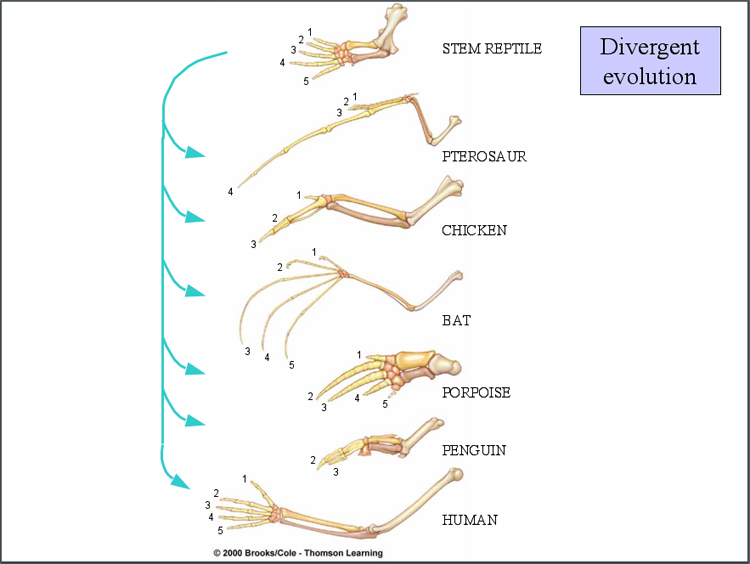- Home
Welcome !
Welcome to john houghton's home page for his biology courses. This site is designed as a hub for curating and sharing lectures, course syllabi, assignments, and links to relevant resources. Use the menu bar at the top of the screen to navigate through the site.
(Please note: this page is currently under construction.)

- BIOL 2107
Fall '22 CRN87989
Lectures: (1)
- Courses
- Resources
General Resources

QUIZ 1
Genetic Toolkits -MOVIE
The
Significance of Speciation The result of how speciation can come about through the various "forces of evolutionary change" that I itemized in the last lecture breates insight in to how -over billions of years of change- organisms have given rise to a world in
which the current living organisms can be organized into millions
of discernable species, each adapted
to living in a particular environment
and each, each (now) pre-adapted to use environmental resources in
a particular way. Furthermore, in the full knowledge that there is no truly clear-cut scientific
method that will define ALL species... where do we take this knowledge?
How do we classify these assorted "species"? Phylogeny:
history of descent from a common ancestor
(phyl = village, gen = beginning, or origen Despite their being inomplete, fossil records provide useful sources of evidence of physical similarities that can be -and which are- used to help determine if evident morphologically
similarities in different organisms do indeed demonstrate ancestral links. In essence these fossil records confirm (as well as occasionally modify) our understanding that the taxonomic systems (post Linnaeus) still reflect evolutionary relatedness (post Darwin). To do this the related organisms are now categorized
as nodes of a tree, the branches of which give some indication
of potential relationships among and betwee the various organisms whose pehnotypes are being being compared. To do this the organisms are placed within phylogenetic "family"
trees and the progression of evolutionary change is considered to be DIVERGENT, with each of the branches branching off, taking one of two alternative paths. Such trees are
often further divided in terms of MONO- PARA- and POLY- phyletic taxa. ....wherein all descendents (mono-), or some descendents (para-)
of a (recent) single ancestor are included In order to build these trees,
latter day taxonomists assume that various "traits", which are
inherited from a common ancestor, are said to be either homologous (features "shared with" or "descended from" a common
ancestor), or derived traits (i.e. traits that now differ
from their ancestral forms). To further confuse the issue, not all similar features actually look the same -the leaves
on a cactus can look very different from leaves on other trees, but the
visual differences belie a quite similar genetic heritage between
the different types of plants. As mentioned previously some traits are ancestral (shared with all members of a "monophyletic groups", while others are derived (traits or characteristics that are present in one or only some of the latter day organisms that are not present in their ancestors). To determine true evolutionary
relationships, systematists must not only distinguish between ancestral and derived traits within
a lineage, but also homologous and homoplastic traits (i.e. traits that are similar for some reason other than
inheritance). Is there any other example
of a homoplastic trait that might spring readily to mind?? Making such distinctions is
quite difficult, because divergent evolution may make homologous traits appear dissimilar, and convergent
evolution can often make homoplastic traits appear quite similar.
For this reason, when systematists construct phylogenetic trees they must be careful to use what are termed "useful" characteristics, often referred to as "operational taxonomic units or "OTU's". For each tree that is constructed these OTU's will vary.
Above and beyond all these overt traits, scientists can now make even more rigorous appreciations of evolutionary changes by using some of the ultimate "molecular fossils" on record....
 ... or each organism's genetic blueprint.....their protein or DNA profiles...
... or each organism's genetic blueprint.....their protein or DNA profiles... 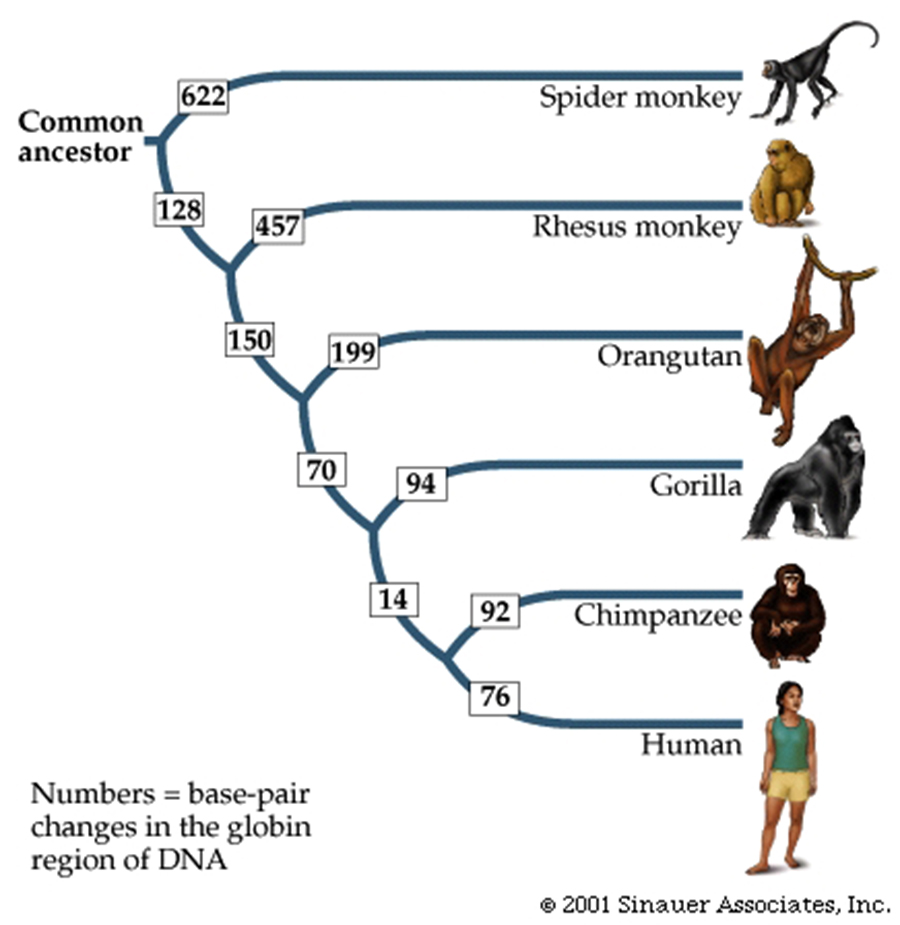
Now, having understood, all this, and also how to make different phylogenetic trees using all the appropriate taxonomic units etc., how do we address some of the fundamental concerns that we may have with evolution.
Yes we have looked at whales, and we have suggested that the preponderance of evidence is in favour of their having evolved from a "wolf-like" ancestor, but if all these ideas about "association of traits" are to be fully understood and fully reconciled with the any theory of evolution, then shouldn't there be some "unifying themes" that tie all animals, if not all organisms together, that they ALL share?
...and it turns out that there are.
The Genetic Toolkit (movie). Many aspects of this movie will be dealt with in depth at a much later date (after we have dealt with Mendel and his multi-functional peas). Even so, the ideas within the movie are still topical at this stage of the course, at least to suggest some deeper similarities that truly support evolutionary thought.
OK., so having dealt with the past, what about the future....... If certain traits are derived, and then -in effect- subsequently "perfected" through natural selection... then there is a potential problem.
One of the major arguments against a simple "Selective" mechanism for evolutionary changes poses the question, How could certain, complex organs evolve, when their very function had to be already available in order for it to be perfected...
The so called problem of the "mouse trap".
How are various complex structures such as wings -for example- developed, when -until they become functional wings- they are essentially a waste of appendages?
To some extent the evolution of the wing can be seen as an adaptation of appendages to variable degrees of an animal's ability to glide.
But what of other complex organs, like the eye, which can be seen in various forms throughout the animal kingdom, how could such a complex organ be developed from scratch?
Evolution of the Eye (movie)
Even with such an appreciation of similarities and differences -along with potential variables of genetic differences within given populations- the fundamental concepts that I have been trying to get across to you assume that any given species is essentially a relatively stable pool of inherent variability (alleles) that is able to acquires new trait from gene flow and loses or gains other traits (more often than not) through random loss/acquisition......which we call...?
While this may seem complex enough, it really is an overly simplistic appreciation of "species" and "populations". There are many, many more additional layers of complexity, some subtle and some not so subtle.
Very often they compete for resources and/or are interconnected with other species in a variety of different ways, the most easy to understand being the interaction of prey and predator.
Predator–prey
interactions interactions, that can even provide change over evolutionary time
Predators are agents of natural selection and mortality since they do not
capture prey individuals randomly. Therefore, prey species have evolved
many adaptations to make them more difficult to capture and consume.
Toxic hairs, tough spines, and noxious chemicals are some examples of defensive adaptations.
Camouflage, or even Mimicry are both evolved defense mechanisms, ultimately brought about to thwart the actions of predators:
Batesian mimicry occurs when a non-aggressive species mimics the look of a more aggressive and dangerous one, or a more palatable species mimics an unpalatable or noxious one.
Directional selection then this potentially causes unpalatable species to evolve away from their mimics. This happens because unpalatable individuals that look least like the "average" predator and the mimic will be preyed on more than the onees the mimic more closely resembles.
Predators may in turn evolve more effective means of overcoming prey defences.
One, rather unusual interaction between predator and prey, illustrates just how interwoven the predator prey relationship can get: Toxic Newts. (movie)
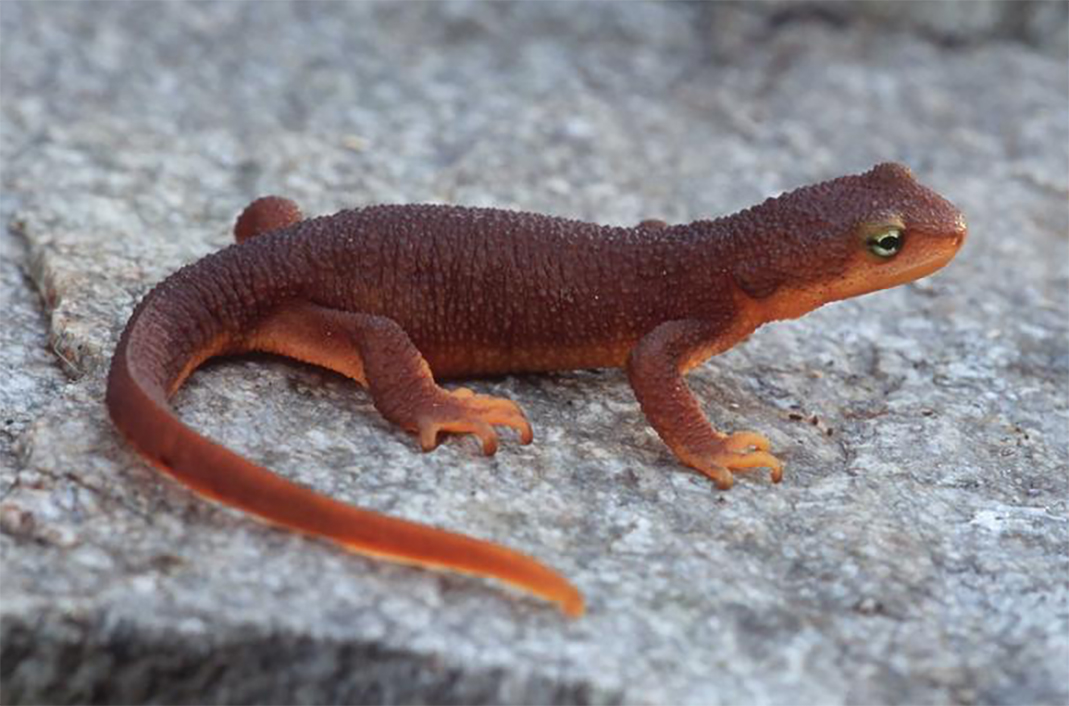
Species that mutually influence
one another's evolution are said to have co-evolved.
In diffuse evolution, species traits are influenced by interactions with
a wide variety of predators, parasites, prey, or mutualists.
Populations are, therefore, dependent upon their environment -their Ecology, but there are aso inherent variables within a given population that we have not yet addressed.
Other factors also effect evolutionary chang, such as:
a) population density (Individuals in a population may have uniform, random, or clumped distributions)
b) Births and Deaths: Births, deaths, immigration, and emigration drive changes in population density and distribution.
N = N0 + B - D + I + E.
We can go one step further. We can analyze a cohort (or a sub group of a population), defined by some determination of Age.
c) Age distribution within a population, which reveals the recent history of births and deaths. Timing of these may influence age distributions for many years.
Furthermore, ecologists, also analyze a category called survivorship, to appreciate how the various individuals within a cohort survive in the environment. For some, survival is uniform throughout the the =different ages within the population. For other populations it is far from it.
d) Population growth rate "r" = average number of births / average number of deaths x N (the number in the population).
Theoretically, the trend for a population growth -unfettered by the environment is logarithmic, but when constrained by the environment population growth can vary depending upon many inherent factors; the type of organism and it's lifestyle under investigation.
However, other external factors must come in to play, giving rise to the more sigmoidal curve, which defines a maxima,"K" or "carrying capacity" for that particular population.
When the number in the population = maximum or the "carring capacity", the population growth will stop.
Population numbers are essentially regulated in response to population density, for a variety of reasons such as predation, food supply and or potential spread od diseases.
Consequently, even though in the short term, catastophes may effect a populations size....in the long term (assuming the population survives), the population's density ought to recover towards, what is termed a density equilibrium.
Because we humans have opted out of the selective process our population curve is still exploding in an exponential manner.

